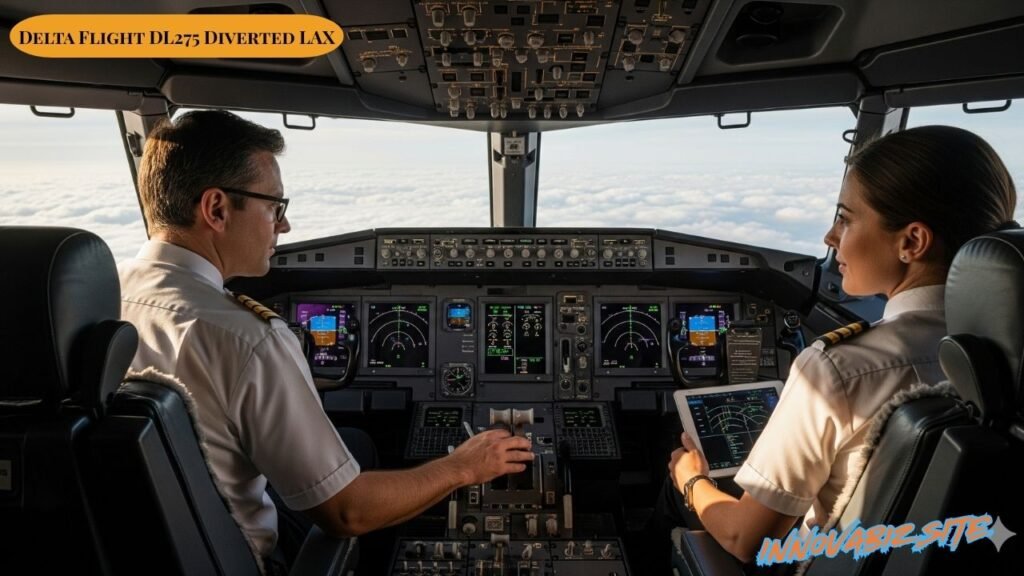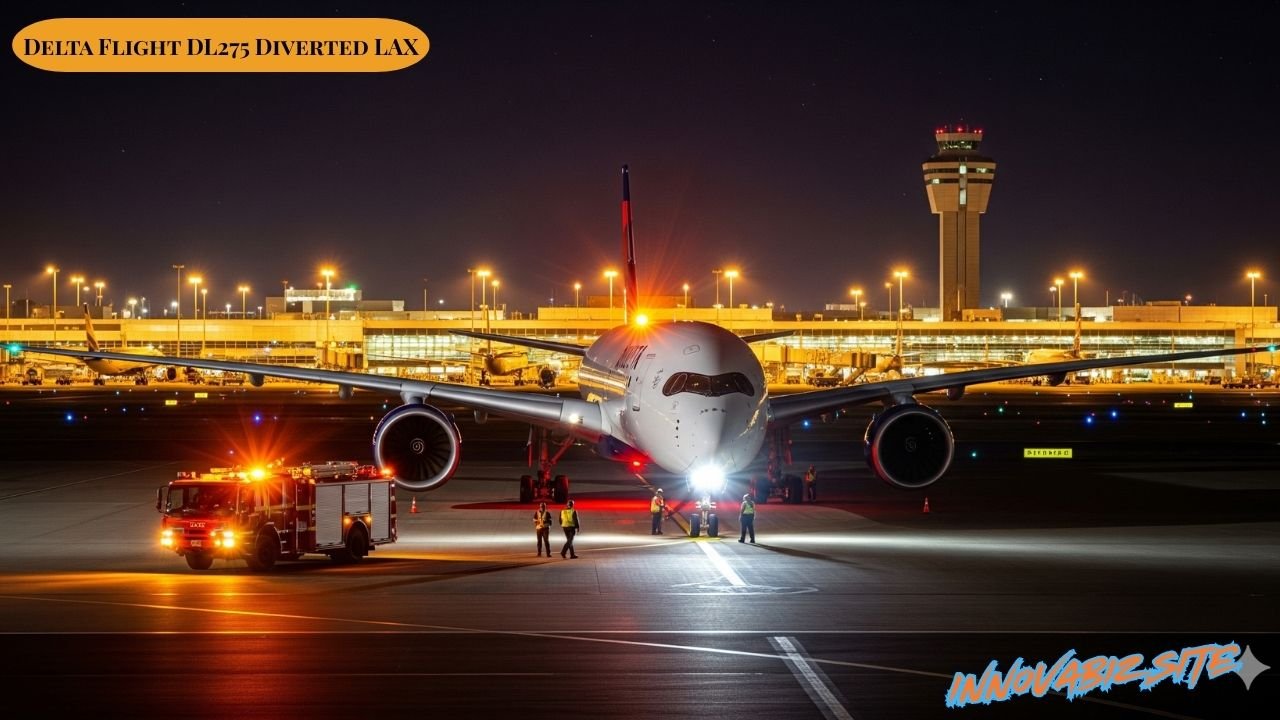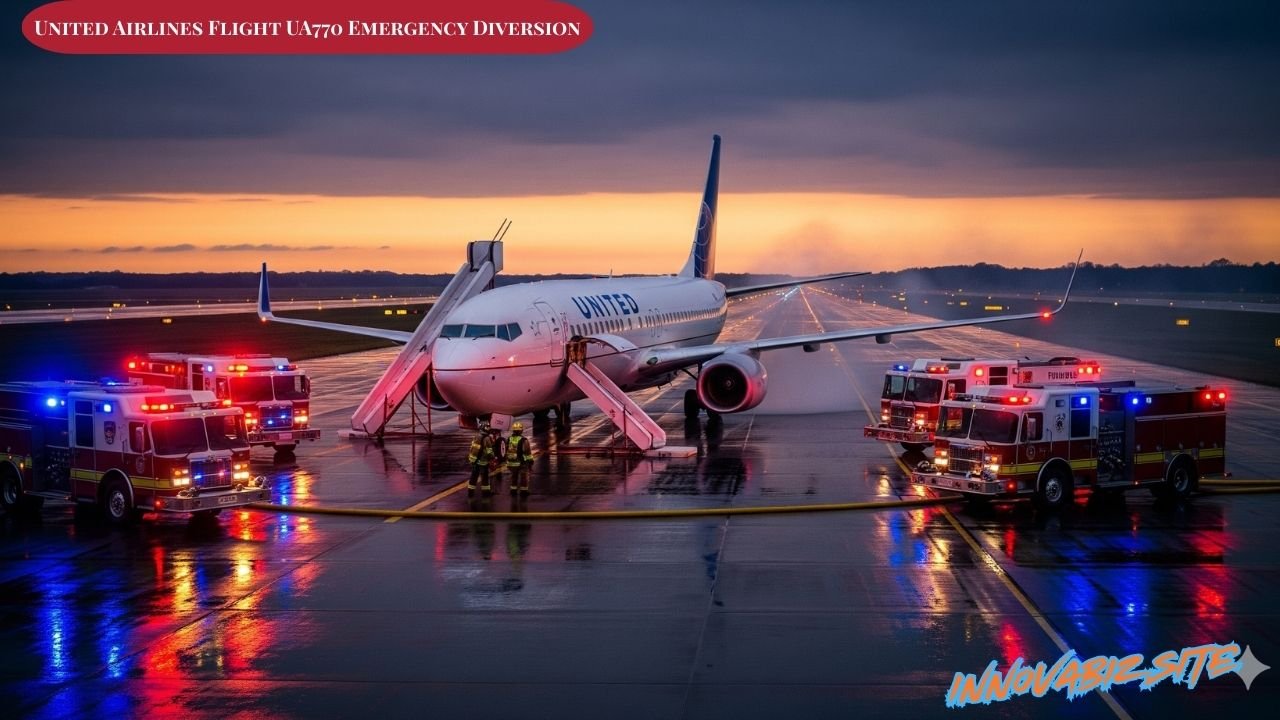Introduction
In a dramatic turn of events that captured aviation headlines, delta flight dl275 diverted lax became the center of attention when Delta’s regularly scheduled Detroit to Tokyo service faced an unexpected emergency. The incident, which occurred during what should have been a routine transpacific journey, resulted in an unplanned but safely executed landing at Los Angeles International Airport.
The flight, operating under the call sign DL275, serves as a crucial link in Delta’s international network, connecting Detroit Metropolitan Wayne County Airport to Tokyo’s Narita International Airport. When passengers boarded that day, they expected a standard 13-hour journey across the Pacific. Instead, they found themselves part of an aviation story that demonstrated the importance of safety protocols and crew expertise in handling unexpected situations.
Flight Details and Route

Delta Flight DL275 typically operates as a non-stop service covering approximately 6,800 miles between Detroit and Tokyo. The aircraft assigned to this route is usually a wide-body jet capable of long-haul international travel, equipped with modern navigation systems and safety equipment designed for extended oceanic flights.
Under normal circumstances, the flight follows a northerly great circle route across Canada, Alaska, and the North Pacific before descending into Japanese airspace. The journey typically takes between 12 to 14 hours depending on weather conditions and jet stream patterns. Passengers on this route often include business travelers, tourists, and connecting passengers using Detroit as a gateway to Asia.
The flight’s normal operating schedule positions it as an important connector in Delta’s transpacific network, offering convenient timing for both business and leisure travelers. The aircraft would typically cruise at altitudes between 35,000 and 42,000 feet, taking advantage of favorable winds and weather patterns across the Pacific.
The Incident – What Happened Mid-Flight

Several hours into the journey, the flight crew encountered a mechanical issue that would ultimately change the course of their destination. According to aviation reports, the aircraft experienced an engine anti-ice system failure while flying over the Pacific Ocean. This type of failure, while not immediately life-threatening, poses significant safety concerns, particularly when flying over remote oceanic areas.
The anti-ice system plays a crucial role in preventing ice buildup on critical engine components, especially important during flights at high altitudes where temperatures drop well below freezing. When this system fails, pilots must make careful decisions about continuing the flight, particularly when flying over areas where emergency landing options are limited.
The flight crew, following established safety protocols, immediately began assessing the situation. They consulted with Delta’s operations center and maintenance personnel to evaluate their options. The decision-making process involved considering factors such as weather conditions, remaining fuel, passenger safety, and the availability of suitable alternate airports.
Communication with air traffic control became critical as the crew worked to determine the best course of action. The professionalism and training of everyone involved ensured that safety remained the top priority throughout the decision-making process.
Diversion Process and Landing
After careful consideration of all factors, the flight crew made the decision that delta flight dl275 diverted lax today would be the safest option rather than attempting to continue to Tokyo or return to Detroit. Los Angeles International Airport was selected as the diversion destination due to several key factors: adequate runway length, full emergency services, maintenance facilities, and Delta’s operational presence at the airport.
The diversion required careful fuel management and flight path adjustments. The crew had to calculate whether they had sufficient fuel to reach LAX safely while maintaining required reserves. Air traffic controllers worked closely with the flight crew to provide the most direct routing possible to Los Angeles.
Upon approaching LAX, emergency services were placed on standby as a precautionary measure. This is standard protocol for any aircraft experiencing mechanical issues, ensuring that fire trucks, medical personnel, and other emergency responders are ready to assist if needed.
The landing itself was executed smoothly and safely, with the aircraft touching down without incident. Passengers reported feeling the landing was normal, with many unaware of the full extent of the mechanical issue until after they were safely on the ground.
Passenger Experience

The passengers aboard the diverted flight experienced a range of emotions as the situation unfolded. Many initially felt concern when the captain announced the diversion, though the professional manner in which the crew handled the communication helped maintain calm throughout the cabin.
The flight crew provided regular updates to passengers, explaining the nature of the mechanical issue and the reasoning behind the diversion decision. This transparency helped reduce anxiety and demonstrated Delta’s commitment to keeping passengers informed during irregular operations.
During the diversion, cabin crew members worked to ensure passenger comfort, providing additional refreshments and answering questions as they arose. The crew’s professionalism and calm demeanor played a significant role in managing passenger concerns during what could have been a stressful situation.
Many passengers later praised the crew’s handling of the situation, noting that they felt safe and well-informed throughout the experience. The incident served as a reminder of the importance of well-trained flight crews and the value of clear communication during unexpected events.
Airline Response and Customer Service
Delta Air Lines responded quickly to assist affected passengers once the aircraft safely arrived at LAX. The airline’s customer service team worked to provide accommodations, meal vouchers, and rebooking options for passengers whose travel plans were disrupted by the diversion.
Understanding that passengers had connecting flights, hotel reservations, and other commitments in Tokyo, Delta worked to minimize the inconvenience caused by the unexpected diversion. The airline arranged for alternate flights to help passengers reach their final destinations as quickly as possible.
Customer service representatives were available to explain passenger rights regarding compensation and refunds for the disrupted travel. Delta’s policies regarding irregular operations helped ensure that passengers understood their options and could make informed decisions about their continued travel plans.
The airline also provided regular updates about the delta flight dl275 diverted lax status through various communication channels, keeping both passengers and their families informed about the situation and next steps.
Safety Implications and Aviation Lessons
This incident highlighted the aviation industry’s commitment to safety-first decision making. The crew’s decision to divert rather than attempt to continue to Tokyo demonstrated the effectiveness of current safety protocols and training programs.
Engine anti-ice systems, while typically reliable, represent critical safety equipment on aircraft. When these systems fail, pilots must carefully evaluate continuing conditions, particularly over oceanic routes where alternate airports are limited. The incident reinforced the importance of having multiple contingency plans and the training to execute them effectively.
The successful handling of this situation also demonstrated the value of coordination between flight crews, air traffic control, airline operations centers, and airport emergency services. Each group played a vital role in ensuring the safe resolution of the situation.
Aviation safety experts often point to incidents like this as examples of the system working as designed. Rather than taking unnecessary risks, the flight crew made the conservative decision that prioritized passenger safety above all other considerations.
Aftermath and Resolution
Following the safe arrival at LAX, the aircraft underwent thorough inspection by Delta’s maintenance team. This process involved detailed examination of the anti-ice system and any related components to determine the exact cause of the failure and ensure the aircraft’s airworthiness before returning to service.
The maintenance team worked efficiently to address the mechanical issue, though the process required several hours to complete properly. Delta’s commitment to thorough maintenance procedures meant that the aircraft would not return to service until all systems were verified to be functioning correctly.
Passengers provided feedback about their experience, with many expressing appreciation for the crew’s professionalism and Delta’s handling of the situation. This feedback helps the airline continue improving its procedures for managing irregular operations.
Delta issued official statements acknowledging the incident and praising the flight crew’s professional handling of the situation. The airline emphasized its commitment to safety and thanked passengers for their patience during the unexpected diversion.
Broader Context
Aviation diversions, while relatively uncommon, serve as important reminders of the industry’s commitment to safety. Airlines and regulatory authorities maintain extensive procedures for handling mechanical issues, weather problems, and other situations that might require flight diversions.
The incident joins a long history of successful emergency responses in commercial aviation, demonstrating that current safety systems, training programs, and decision-making protocols continue to protect passengers effectively. These events, while inconvenient, showcase the aviation industry’s culture of placing safety above schedule adherence.
Public confidence in air travel safety remains high partly because of incidents like this, where potential problems are addressed proactively rather than reactively. The transparency with which airlines and regulatory authorities handle these situations helps maintain public trust in commercial aviation.
Regulatory oversight ensures that airlines maintain high standards for both equipment maintenance and crew training. The successful resolution of this diversion reflects the effectiveness of these oversight programs and the commitment of aviation professionals to continuous safety improvement.
Conclusion
The diversion of Delta Flight DL275 to LAX represents aviation safety protocols working exactly as designed. When faced with a mechanical issue that could have posed risks during continued oceanic flight, the flight crew made the prudent decision to divert to the nearest suitable airport.
The incident provided valuable lessons for the aviation industry about the importance of thorough maintenance, comprehensive crew training, and effective communication during irregular operations. Delta’s handling of the situation, from the initial crew response through passenger care, demonstrated best practices in managing unexpected events.
Most importantly, the safe resolution of this situation reinforced that passenger safety remains the top priority in commercial aviation. The decision to prioritize safety over schedule convenience, while inconvenient for passengers, ultimately demonstrated the industry’s commitment to protecting those who choose to fly.
The professionalism displayed by all involved parties – from the flight crew to ground personnel to customer service representatives – exemplified the high standards that passengers have come to expect from major airlines when dealing with challenging situations.





